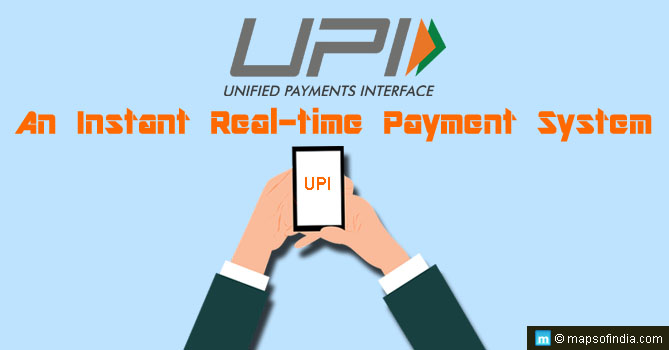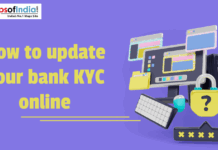
What is UPI?
UPI stands for Unified Payments Interface. It is an instant payment system that helps you transfer money from one party’s bank account to another. An RBI-regulated entity named NPCI (National Payments Corporation of India) has developed UPI over the infrastructure of IMPS. The best part of this system is that the user can use any UPI client app and add multiple bank accounts to a single app.
Unified Payments Interface or UPI has already become a huge success and is helping the government move towards a society that depends less on cash for daily transactions. More and more banks are going live on UPI with increasing volumes and values of transaction. NPCI’s UPI Product Statistics data shows that there are 142 banks live on UPI as of June 2019. While the monthly volume of transaction is 754.54 million, the monthly value of the transaction is Rs. 1,46,566.35 crore.
How does UPI Work?
The UPI interface allows you to make or receive payments to or from any account holder across banks. You can access the UPI from the convenience of your smartphone and make the payment without having to enter details of the bank account. Payments can be transferred or received just by providing any one of these: mobile number, Aadhar number, virtual payment address, or others.
UPI has two types of addresses for the transaction, and they are the global address and the local address. While VPA (Virtual Payment Address) or UPI Id is considered local address, Aadhar number, mobile number, and bank account number are considered global addresses.
Now, let’s check how UPI helps in sending and requesting money by using the following ways:
- VPA (Virtual Payment Address) or UPI ID
VPA can be used for mapping a bank account and then either request from that bank account or send money to that account.
- Mobile Number
You can use mobile number for mapping a bank account and then either request from that bank account or send money to that account.
- Bank Account Number and IFSC Code
These can be used for sending money to the concerned bank account.
- Aadhar Number
You can use Aadhaar number for mapping a bank account and then either request from that bank account or send money to that account.
- QR Code
QR code encloses bank account number, Virtual Payment Address, and IFSC, or mobile number.
Whether you want to make utility payments, pay cab fare, pay/receive money to other bank accounts, or carry out any monetary transactions, UPI can be your single point payment solution. As UPI runs on IMPS infrastructure, you can avail the service round-the-clock and on a real-time basis.
How is UPI Simpler than Online Bank Payment?
UPI is a simpler process of making the payment than online bank payment. For making bank payment online, a person must enter 4 important pieces of information of the person to whom he/she is making the payment: bank account number, bank account type, name of the bank, and IFSC Code of the bank’s branch.
First of all, you must have all the information with you to initiate the payment process. If you are using mobile to make the online bank payment, it becomes a painful process because you must provide all these details. In fact, even after adding these details, it is not always an instantaneous process. Many banks still take 12 hours to add a new payee. Once this is done by the bank, only then can you make the payment.
However, UPI (Unified Payments Interface) doesn’t need you to do all these things every time, thereby making it a simpler way of making the payment than online bank payment.
What are the Benefits of UPI?
- UPI is Universal
A single UPI app can be used for different bank accounts. You simply need to link your multiple bank accounts to your UPI-based application. You can use any bank account to make payments because all the accounts can be accessed from a single place.
- Multiple Choices
You can use any UPI to access multiple bank accounts. If you are using an Axis Bank UPI app, you can access any other bank account (say, SBI account or ICICI account). While choosing a UPI app, check the ease of use, the interface, and availability of the desired virtual payment address.
P.S. Though there are multiple choices available, it is not advisable to change the UPI app frequently because you will need a new VPA every time you change a UPI app.
- Smooth & Easy to Use
Making a payment through UPI is easy.
– For paying merchants: You simply need to provide VPA to the merchant and a message will be prompted at the smartphone. Now, you simply have to approve the payment amount, followed by entering the PIN. The payment is done to the merchant.
– For transferring funds: First, open the UPI App and provide the 4-digit passcode. Choose the payee to whom you want to make the payment, enter the payment amount, and enter MPIN.
- Instant Transfer & Round-the-Clock Availability
You can make payments or transfer funds instantly with UPI 24×7. It is faster than both NEFT and IMPS. While NEFT can take up to 12 hours for money transfer, IMPS has at least 30 minutes waiting period for IMPS registration. However, UPI is available instantly.
- Transaction is Free
Finance minister Nirmala Sitharaman has said that no fee will be charged for making payments through UPI.
- UPI is better than Wallets
Wallets don’t pay any interest for keeping your money. When you use UPI, the money remains in the respective bank account itself. So, you keep getting the interest on the money you keep in the bank account. That’s why UPIs are better than wallets.
Conclusion
UPI is easy to use and more secure than online bank payments. So, start using UPI and pay/receive payments instantly.
Related Links:
Top 10 Banks in India by Size and Market Capital
e-wallets Interlinked: All you need to know





